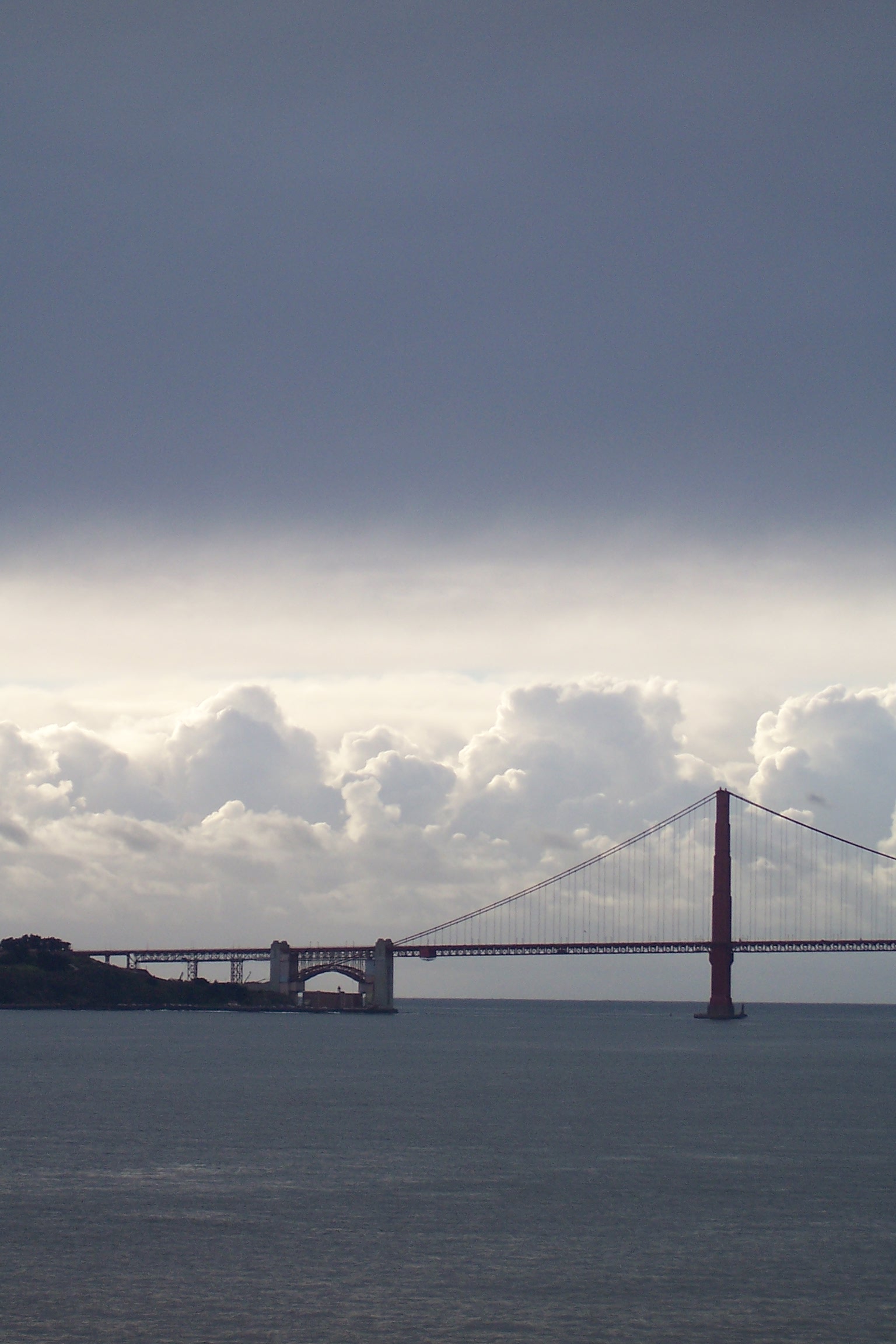New life for forgotten photographs
A lot of thought goes into the composition of a photograph. Lots of small decisions sum to the final image. The difference between when I started taking pictures and now is that composition has become a conscious process with consistent results. In earlier snapshots, the consistency was not there and any satisfying compositions were generally taken by accident or without intention. Does this mean all my early images are worthless? Maybe not.
Composition by accident
Golden Gate Bridge, San Francisco. Kodak DX7440.
Here is an example of discovering a good composition in an old set of images. One of my favorite pictures from my time in California is a shot of the Golden Gate bridge. It was a quick snapshot taken from the Alcatraz ferry for a memory rather than for a print, but it contains many visual elements that are very pleasing. The image is split into thirds horizontally - sea, clouds and sky. The bridge is viewed from an orthogonal angle - most postcard shots are oblique and taken from higher ground. I don't even know if I could take this exact photo again as so many elements came together in a single moment.
Composition by editing
It is an interesting exercise to look though old photographs that are not perfect, but have the potential for improvement. Here are some ways to bring out their best:
- Cropping. Basic composition tools like symmetry, rule of thirds, or even border-placement of a subject can be achieved using simple cropping and rotation.
- Perspective correction. Pictures of man-made structures are often distorted due to the tilt of the camera. Professional photographers use tilt-shift lenses or large format cameras, but corrections can also me made in processing software. Correcting the converging lines of a building to being parallel can make a photo more pleasing.
- Black and white conversion. Some images can be ruined by conflicting or distracting colours taking the emphasis away from the subject. A conversion to monochrome can restore balance, assuming that a strong figure-to-ground relationship remains.
- Spot removal. I have some scans of my parents' photographs from the 1960s through the 1990s. On a few of my favorites I have gone in and digitally removed dust and scratches to make them look less neglected, but not so much to make them look like a modern image. To further the restoration, correcting the white balance can completely change the mood and perceived reality of an old image.
Lastly, and this might not be for everyone, but editing by deletion is also possible. You can delete duplicates (or near duplicates), off-focus images and those which have no meaning to you. This means that when you do go though old photos looking for ones to revive, there are fewer, but higher quality photos to search through.



